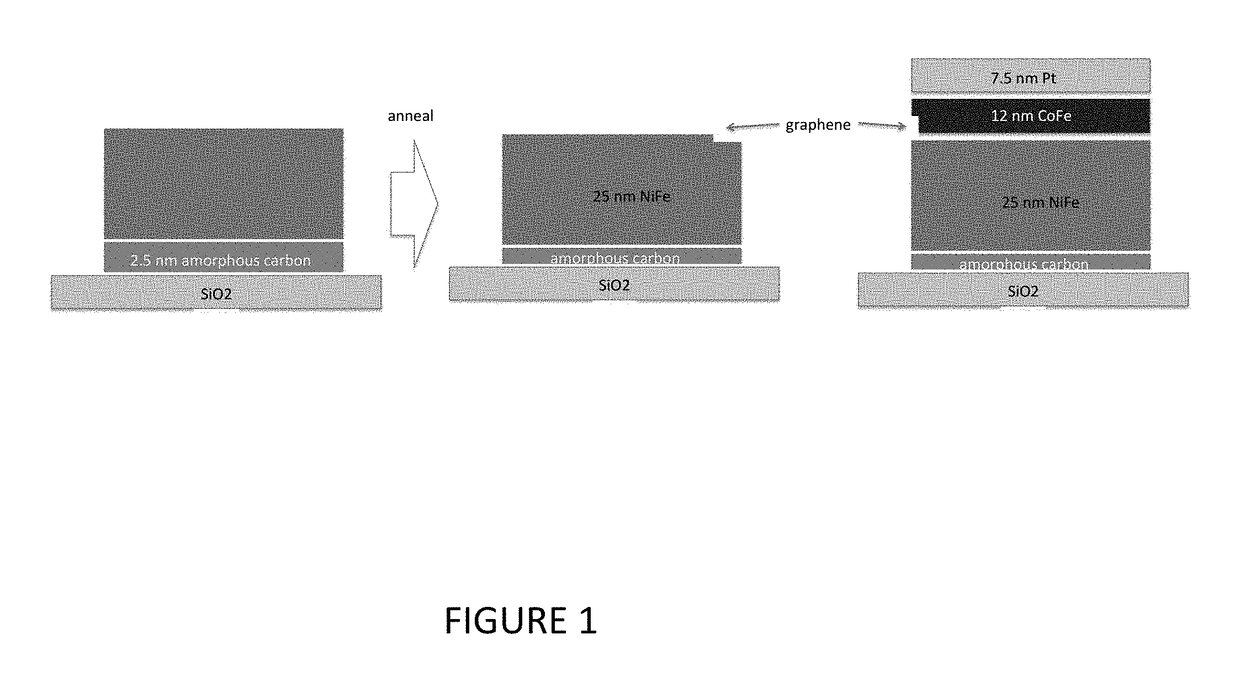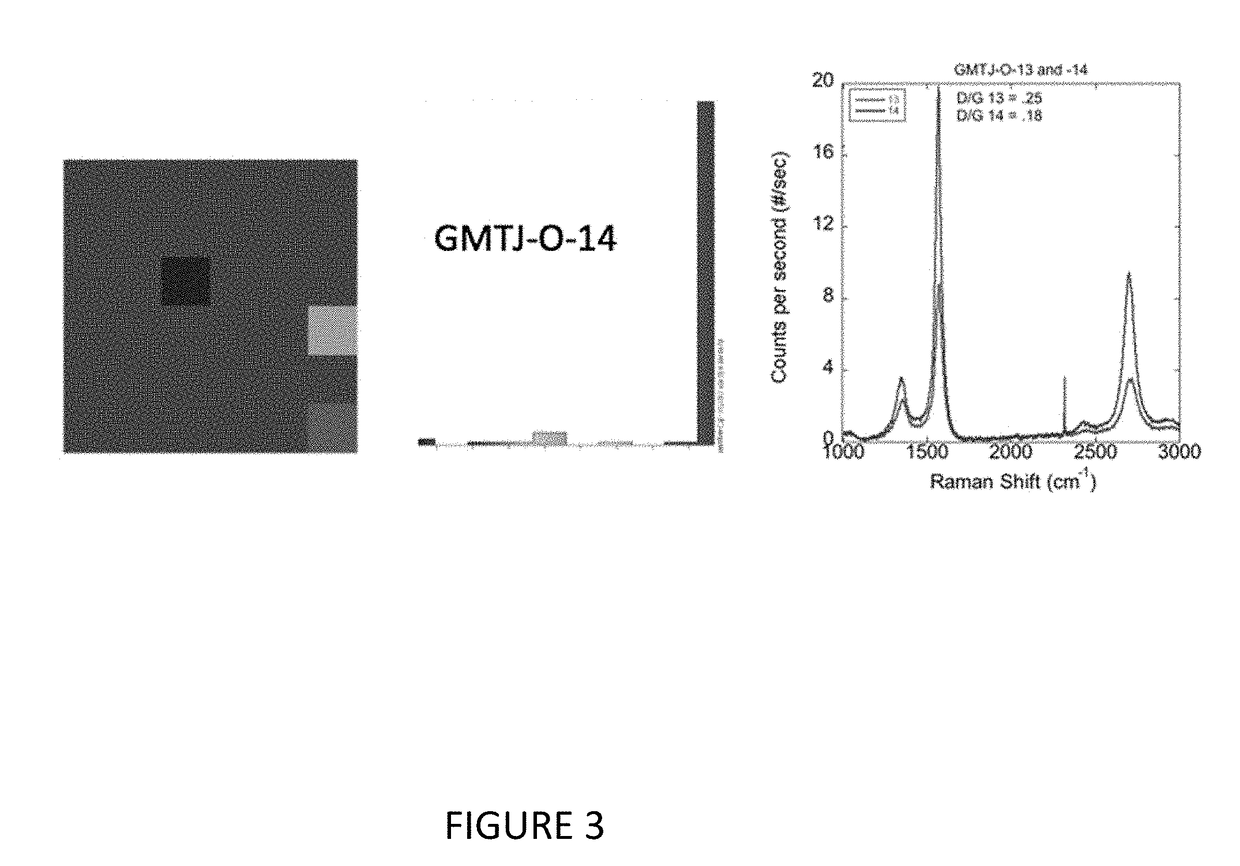Magnetic Field Sensor Using In Situ Solid Source Graphene and Graphene Induced Anti-Ferromagnetic Coupling and Spin Filtering
a magnetic field sensor and solid source technology, applied in the direction of magnetic measurements, magnetic bodies, thin material processing, etc., can solve the problem of low sensitivity (%/oe) and the response is not strong enough
- Summary
- Abstract
- Description
- Claims
- Application Information
AI Technical Summary
Benefits of technology
Problems solved by technology
Method used
Image
Examples
example 1
[0018]The full stack was prepared in situ using DC magnetron sputtering in an AJA sputtering chamber with base pressure less than 3×10−8 Torr. The sputtering guns were in a confocal geometry with ˜15 degree of incidence angle and ˜15 cm of distance between substrate and the gun.
[0019]The substrate, Silicon wafers with a 27.5 nm of thermal oxide, were ultrasonically cleaned 15 minutes each in acetone then alcohol. After loading, the substrate was back sputtered for three minutes at 10W, 100V in 20 mTorr of Argon. 2.5 nm of amorphous carbon was grown at a rate of 0.31 nm per minute at 100 W in 3 mTorr of Ar. 25 nm of Ni80Fe20 was grown at 0.05 nm / sec at 100 W in 3 mTorr Ar.
example 2
[0020]An in situ anneal at 875 C. for 10 minutes was performed in a pressure below 2×10−6 Torr. The sample was then allowed to cool down to room temperature at 10 C. / min. After the sample was cooled down it was either unloaded for analysis or a layer of 12 nm Co90Fe10 was sputter deposited and capped with 7.5 nm of Pt, see FIG. 1.
[0021]FIG. 5 shows the 4 point resistance of the un-processed film. Four probes were place 1 mm apart and a Current Source was used to supply current to the outer contacts, while the potential difference between the two inner contacts was measured by a Keithley 2000 voltmeter in a standard four-probe electrical measurement. The normalized resistance versus magnetic field is shown in FIG. 5.
[0022]FIG. 5A illustrates a standard four probe resistance measurement on the unprocessed film, probe distance is 1 mm and the applied field is parallel to the current direction. A normalized magneto resistance curve showing a negative 4% effect, inset shows Magnetoresist...
PUM
 Login to View More
Login to View More Abstract
Description
Claims
Application Information
 Login to View More
Login to View More - R&D
- Intellectual Property
- Life Sciences
- Materials
- Tech Scout
- Unparalleled Data Quality
- Higher Quality Content
- 60% Fewer Hallucinations
Browse by: Latest US Patents, China's latest patents, Technical Efficacy Thesaurus, Application Domain, Technology Topic, Popular Technical Reports.
© 2025 PatSnap. All rights reserved.Legal|Privacy policy|Modern Slavery Act Transparency Statement|Sitemap|About US| Contact US: help@patsnap.com



